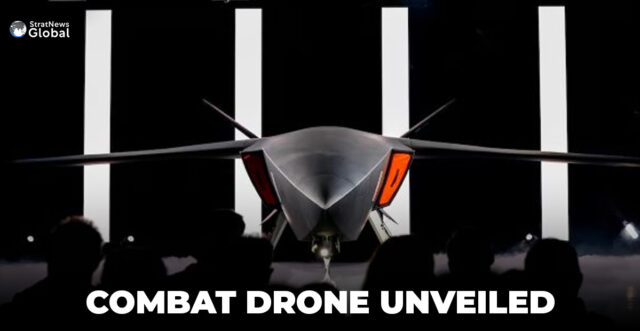On Thursday, German defence startup Helsing launched its new autonomous combat drone, marking its entry into the growing competition to develop remote-piloted systems.
The “Europa” drone is designed to operate in coordinated swarms with other drones or work alongside manned aircraft, a capability seen as central to the future of aerial warfare.
Unveiling a full-size model of the angular, V-tailed drone at a factory outside Munich, Helsing said the “CA-1 Europa” would stage a first flight in 2027 and become available for military operations within the following four years.
Helsing is the latest military tech firm to make a pitch to become a primary manufacturer of weapon systems in competition with heavyweight arms companies, reflecting the increasing role of AI and pressing demands for faster development times.
Unmanned Combat Aerial Vehicles
Weighing four tonnes, the CA-1 Europa belongs to a fast-developing category called Unmanned Combat Aerial Vehicles that are cheaper and more dispensable than classic fighters as air forces face harshly contested environments and higher costs.
Helsing said the AI-powered drone would operate alone, in clusters of other uncrewed vehicles or at the direction of advanced fighter jets in a so-called “wingman” formation.
Last year, the U.S. Air Force selected California-based startup Anduril and Reaper drone manufacturer General Atomics to develop the first fleet of “Collaborative Combat Aircraft”, which can perform missions such as jamming or act as decoys.
In June, Airbus presented a lifesize model of its own concept for a drone designed to fly alongside the current generation of jets like the Eurofighter Typhoon.
Helsing said it was planning investments of hundreds of millions of euros in the project, which would involve collaboration with other unspecified European companies.
It declined to say what weapons it would be able to carry or how much it would cost, other than saying it would be a “fraction” of the cost of an ordinary fighter jet.
Founded in 2021, Helsing specialises in AI software and has also pivoted to providing systems for smaller strike drones for Ukraine in the wake of Russia’s 2022 full-scale invasion.
(With inputs from Reuters)





